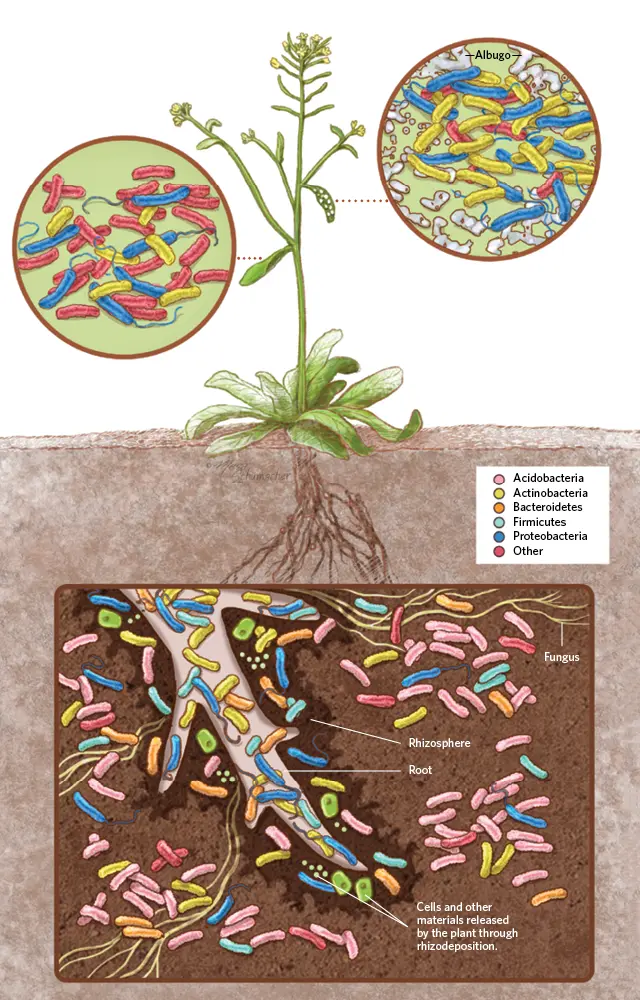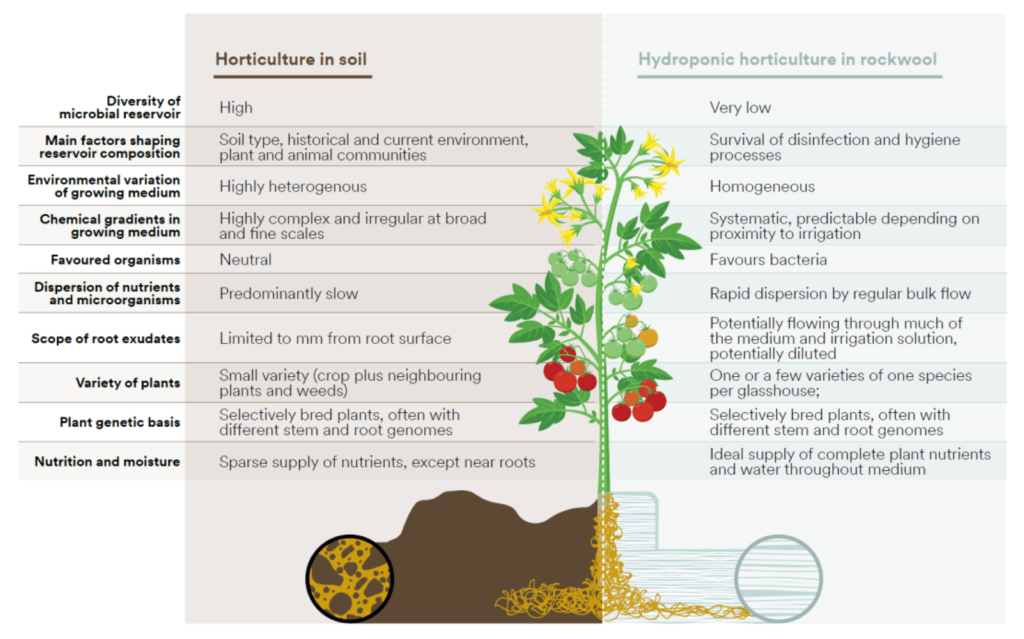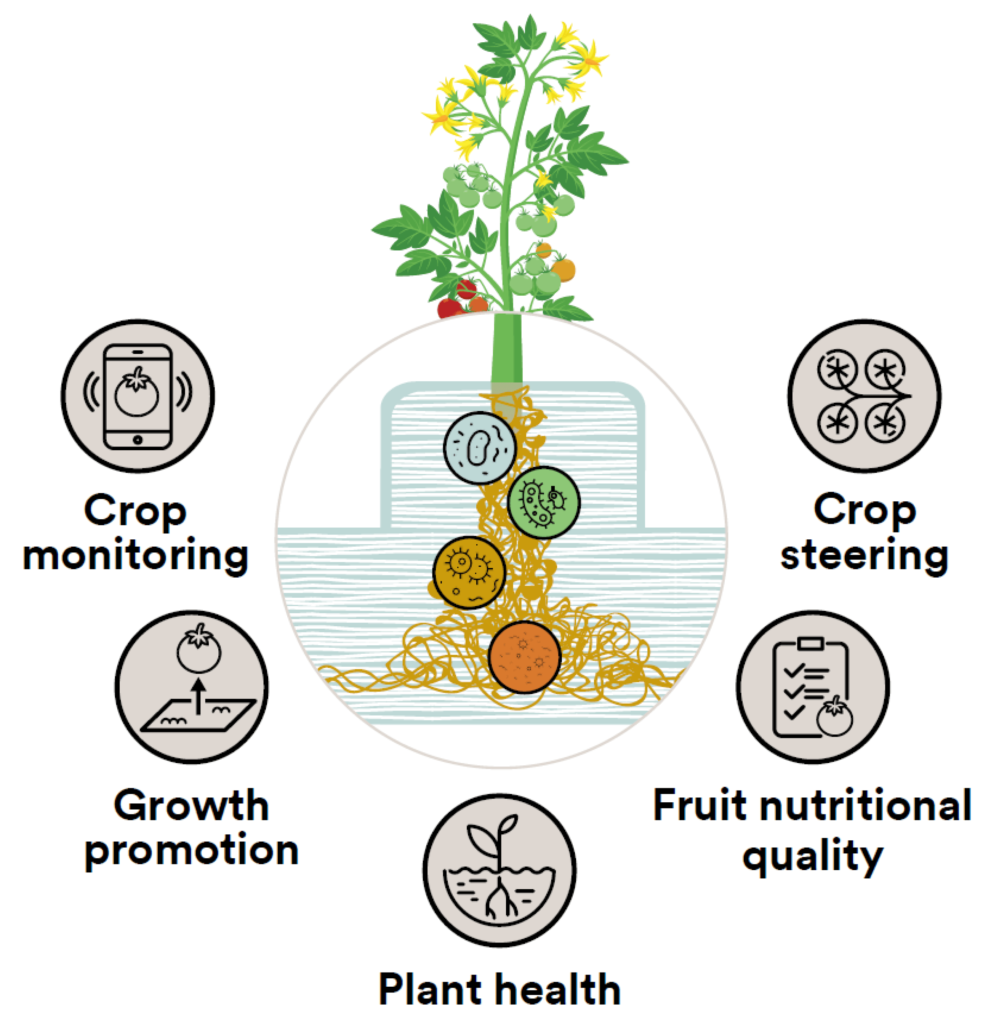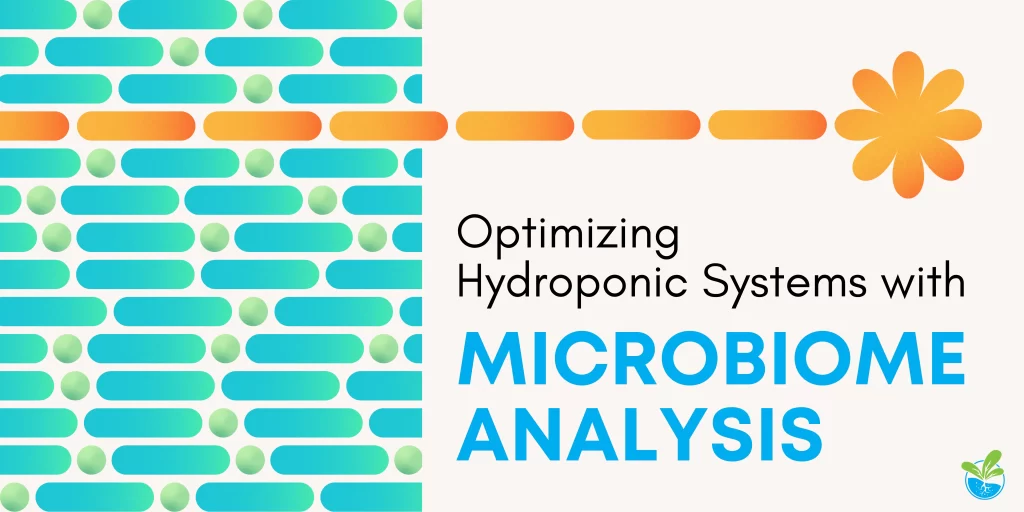Hydroponics and Root Microbiomes
Hydroponic systems offer a unique opportunity to manage the root microbiome due to their ability to control the root zone environment [1]. Understanding and optimizing the interactions between plants and their associated microbial communities can lead to improvements in crop productivity and sustainability.
The Importance of Microbiomes in Hydroponic Systems
Plants grown in hydroponic systems are typically isolated from their microbial partners, which would naturally be found in soil [2]. This isolation may be a disadvantage to plant growth, as beneficial microbes can provide essential nutrients, promote growth, and protect against pathogens [2]. Recent research has begun to explore the hydroponic plant microbiome, including plant pathogens and food safety microbes in commercial hydroponic systems [3,4].

We provide excellent overviews of many agricultural microorganisms. Subscribe to stay updated!

Monitoring and Managing Microbial Communities
Monitoring and managing the microbial communities in the root zone is essential to optimize hydroponic systems through microbiome analysis. DNA sequence-based monitoring can detect and survey the hydroponic plant microbiome, providing valuable insights into the composition and dynamics of these communities [3,4].
Here are some advantages to look forward to, according to Thomas et al. (2023):
1. Beneficial Microbes for Plant Protection
The microbes living in the roots of plants can help protect them not only from underground pathogens but also from pests that attack their leaves. Researchers have shown that manipulating the root microbiome can make plants more resistant to insects that feed on their leaves. The composition of the root microbiome affects the levels of certain plant hormones, which in turn increases the plant’s resistance to pests.
2. Enhancing Crop Growth and Quality
Microbes in the soil help plants grow by breaking down nutrients. In hydroponics, where plants get nutrients directly from a solution, these microbes can still help by reducing disease risk. By managing these microbes around the plant roots, we can better control plant growth, match it to market demand, and even improve the taste and nutritional quality of the fruits. Also, while creating new plant varieties can be expensive and slow, adding beneficial microbes to the roots can tweak the performance of existing plant varieties, making them even better.
3. Early Detection of Crop Problems
Plants release organic compounds from their roots that stimulate the growth of beneficial microbes. The composition of the root microbiome can change in response to different conditions, and these changes can be detected earlier and more sensitively in hydroponic systems. Monitoring the microbiome can provide early warning signs of crop issues before visible symptoms appear, allowing farmers to intervene early and minimize damage.
Studies have shown that infections by root pathogens can alter the composition of the microbial community around plant roots. Changes in the abundance of beneficial bacteria can indicate the risk of pathogen infection, and monitoring the microbiome can help plan preventive measures. Similarly, changes in the root microbiome have been observed when plants are infected by foliar pathogens, indicating the potential for above-ground events to influence the microbiome.
This information came from Thomas et al. (2023). It is currently one of the best resources that summarize the importance of the microbiome for hydroponic growers.

Beneficial Microbes for Improved Crop Performance
Hydroponic growing lets you control your plant’s environment, including the tiny organisms, or microbes, in the system. The starting point of any optimization is gathering information. Before trying to change the microbiome, you must know what organisms are involved in the community.
Once you know the community, here are some approaches to optimize your hydroponic systems to microbes.
- Introducing beneficial microbes: plant growth-promoting microorganisms (PGPMs) can be introduced to the root zone. These microbes can enhance nutrient uptake, stimulate plant growth, and provide protection against pathogens [2]. For example, a study on Purple Lady Bok Choy (Brassica rapa var. chinensis) in vertical hydroponic systems found that adding vermicompost tea and its associated microorganisms increased biomass and nutrient density [2].
- Next, just like plant steering, you can influence the composition of these microbes through inputs (nutrients, IPM inputs, etc.) and adjusting the environment through the irrigation system. Recent studies involve Synthetic Communities, combinations of beneficial microbes that promote plant growth and health.
- Another way to manage these microbes is through prebiotics, substances that encourage the growth of beneficial microbes already present [1].
Once you make changes, it is important to track the changes as well. You can observe it via the plant (growth, yield, etc.), or you can take a sample of the microbial community and see how it shifted.
Overall, knowing the present microorganisms before putting anything in is important!
Future Opportunities and Challenges
There is still much to learn about the complex interactions between plants and their associated microbial communities in hydroponic systems. Further research is needed to characterize the full functionality of microorganisms found in hydroponic systems and assess how changes in the plant-microbiome networks impact plant productivity and mitigate plant disease and food safety risks [4]. Additionally, developing novel sanitation treatments and microbial food safety interventions for fresh leafy produce, including microgreens in hydroponic systems, is an area of ongoing research.
In conclusion, optimizing hydroponic systems through microbiome analysis holds great promise for improving crop productivity and sustainability. By harnessing the power of beneficial microbes and closely monitoring and managing microbial communities, growers can unlock the full potential of hydroponic systems for agricultural production.
![]()
David Santos is the COO/CMO of Healthy Hydroponics InnoTech





